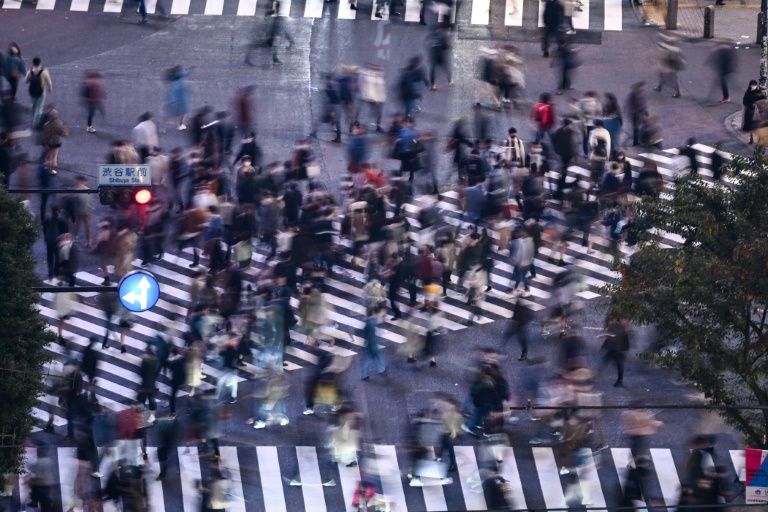Japan exits recession as GDP grows 5.0% in Q3
Tokyo (AFP) – Japan’s economy exited recession in the third quarter, growing a better-than-expected 5.0 percent, government data showed Monday, following a record contraction.
A rise in domestic demand as well as exports helped drive the quarter-on-quarter growth, after the coronavirus pandemic and a consumption tax hike slammed the economy into reverse earlier in the year.
The positive figures come after three quarters of contraction in the world’s third-largest economy, with revised data showing the economy shrank 8.2 percent in Q2, more than the previously estimated 7.9 percent.
That was the worst figure for Japan since comparable data became available in 1980, exceeding even the brutal impact of the 2008 global financial crisis.
The Q3 growth will be welcome news for Japan’s government, which has avoided the tough lockdown measures seen in some other countries as it tries to balance preventing the spread of coronavirus with protecting the economy.
The results also beat economist expectations of 4.4 percent growth, and analysts said the recovery was likely to continue into the final quarter of the year.
“Between July and September, economic activity in Japan experienced a return to a somewhat normal status as the government lifted the state of emergency in the country,” said Naoya Oshikubo, senior economist at Sumitomo Mitsui Trust.
“Looking ahead, we believe that GDP figures in the next quarter should continue to show signs of recovery, albeit at a slower pace,” Oshikubo said in a note before the official release of the data.
“Pent-up demand should decelerate, mainly due to second waves of COVID-19 overseas,” he added.
– Third wave –
Japan was already struggling with a stagnating economy and the impact of a consumption tax hike implemented last year before the pandemic hit.
It has seen a smaller coronavirus outbreak compared to some of the worst-hit countries, with infections approaching 120,000 and deaths at slightly under 2,000.
But Prime Minister Yoshihide Suga last week issued a warning over a recent rise in infections, though he said the government’s campaign to promote domestic tourism would not be halted for now.
Japan imposed a nationwide state of emergency in April as cases spiked, but restrictions were significantly looser than in many countries, with no enforcement mechanism to shutter businesses or keep people at home.
The emergency was lifted in June, and the government has been reluctant to reintroduce curbs.
Suga instructed his ministers last week to draw up a fresh economic stimulus package to help the economy weather the pandemic.
Earlier this year, the government unleashed massive spending, including sending approximately $900 in stimulus funds to every adult and child in the country.
Tom Learmouth, Japan economist at Capital Economics, said the effects of the stimulus efforts were clear in the latest figures, with a 2.2 percent quarter-on-quarter rise in public spending.
“We expect GDP to rebound a further 1.2% quarter-on-quarter this quarter and to reach pre-virus levels –- although not pre-sales tax hike levels -– in the second half of next year,” he wrote in a note.
“While the third wave of coronavirus that is now a reality is a downside risk, our current assumption is that it will be contained as the second wave was, with minimal restrictions imposed on economic activity,” he added.
In October, the Bank of Japan lowered its economic growth and inflation forecasts for this fiscal year, but its governor said officials were ready to unveil fresh support measures if needed.
For the year to March 2021, the BoJ expects the economy to shrink 5.5 percent, against a 4.7 percent contraction in the July estimate.
Disclaimer: Validity of the above story is for 7 Days from original date of publishing. Source: AFP.


